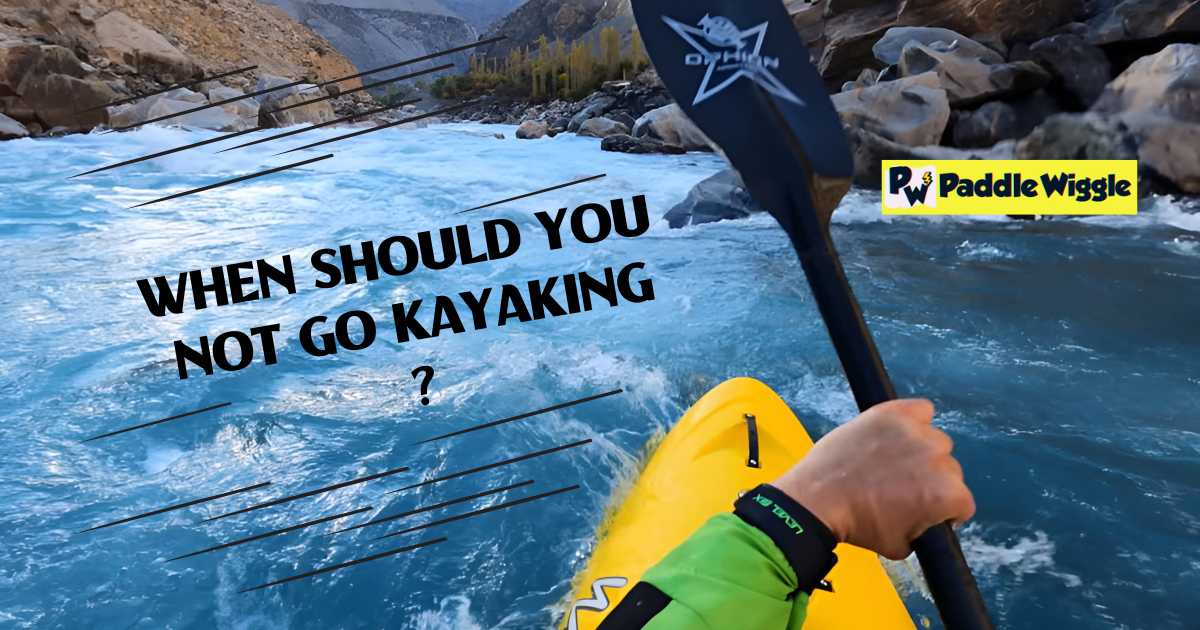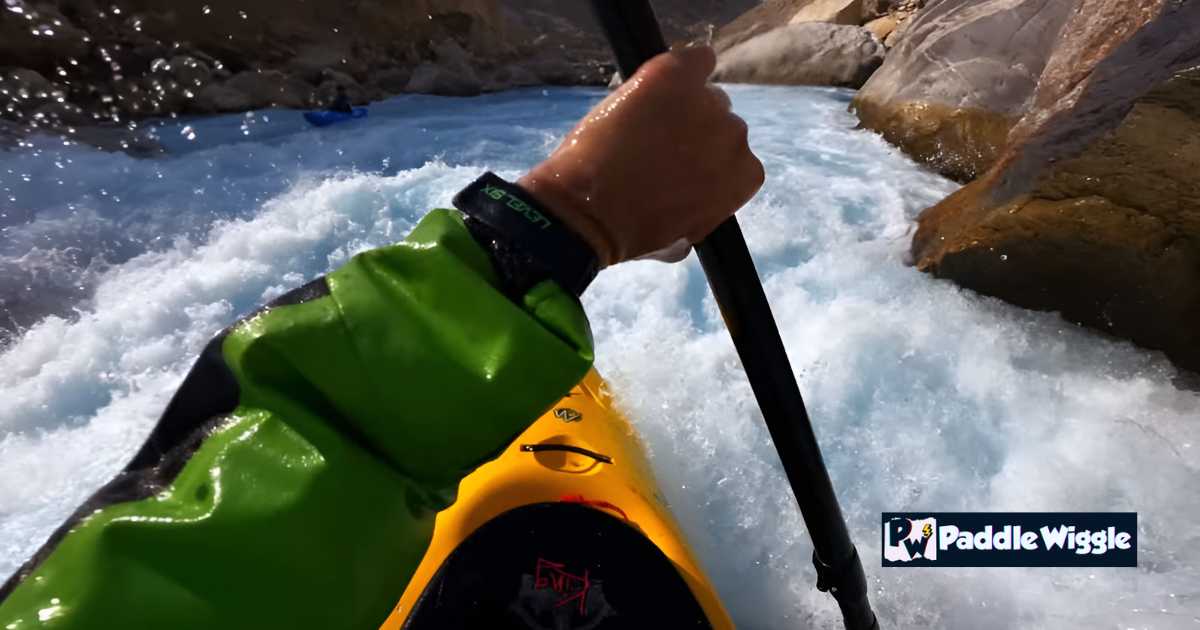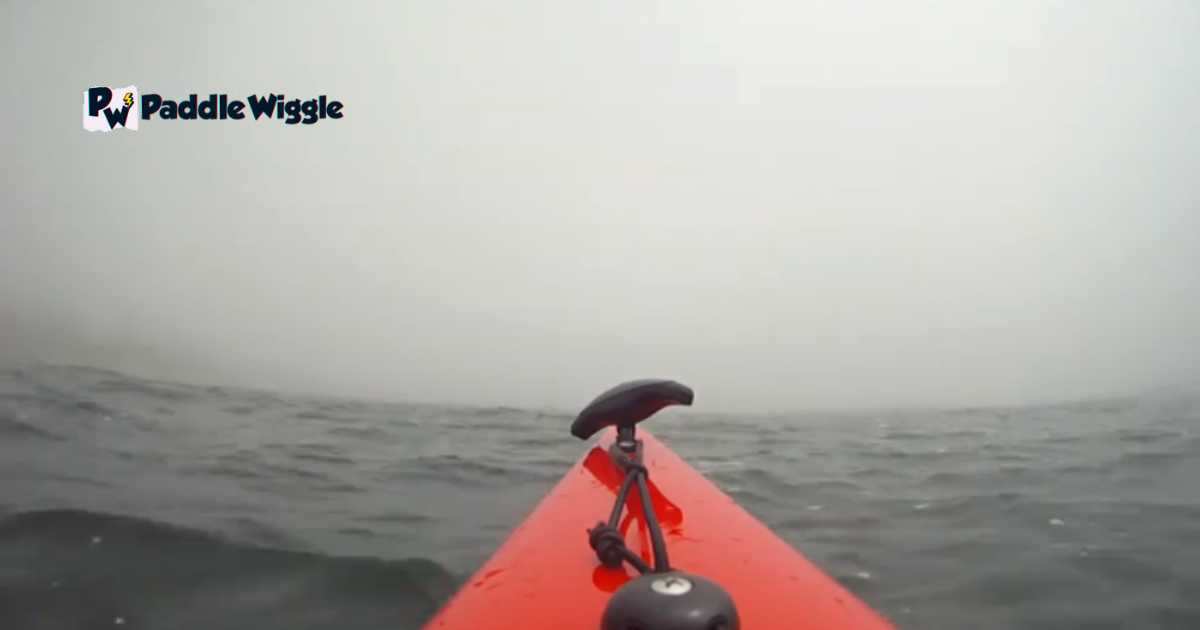Are you someone who loves the excitement of kayaking? It’s such a thrill to paddle through the water and feel the rush of excitement as you tackle the rapids. But wait a second!
Before you head out on your next kayaking trip, have you thought about when it might not be safe to go? Knowing about these situations is really important to keep yourself and others safe.
There are times when it’s best to stay away from the water, like when the weather is really bad, or the water conditions are dangerous. We’ll talk about things like strong winds, thunderstorms, high tides, and rough currents that can be risky for kayakers.
In this article, we’ll go over seven times when it’s better to skip kayaking, including when the weather is extreme, the water is dangerous, or you’re not feeling well.

Contents
7 Times You Should Not Go Kayaking
While kayaking promises exhilarating experiences amidst nature’s beauty, there are times when discretion is paramount for safety. Understanding these critical moments can safeguard against unforeseen hazards and ensure enjoyable outings.
We wrote this article to help people understand when it’s safest to avoid kayaking. Even though kayaking can be really exciting, there are times when it’s really important to be careful for your safety. We want to make sure people know about these important times so they can make smart choices and stay safe while they’re out kayaking.
Let’s dive in!
In Heavy Rain
When you go kayaking, it’s super important to think about the weather. Kayaking is exciting, but staying safe is the most important thing. One time you should definitely skip kayaking is when it’s raining a lot.
The amount of rain that’s too much for kayaking can change depending on where you are, how high the water is, and how comfortable you feel. But as a general rule, if it’s raining really hard, like 25 millimeters (mm) or more in just a few hours, it’s not safe to kayak.
Kayaking in heavy rain can be really risky. The main problem is that it makes rivers and water bodies swell up and flow faster, making them hard to predict and dangerous for kayakers. The strong water flow can make it tough to steer your kayak, and you might tip over or get stuck in debris.
During Severe Weather
When kayaking, it’s important to be aware of the weather conditions before heading out on the water. While kayaking can be a thrilling and enjoyable activity, there are certain times when it’s best to stay off the water, such as during severe weather.
Severe weather can pose significant risks for kayakers. Sudden weather changes, such as thunderstorms or heavy rain, can create hazardous conditions on the water. These conditions can make it difficult to navigate and control your kayak, putting you at greater risk of accidents or capsizing.
Monitor Water Levels Regularly
One key factor to consider during severe weather is the fluctuation in water levels. Heavy rainfall can cause rivers and lakes to rise rapidly, resulting in fast-rising water levels. It is crucial to monitor these levels regularly before embarking on a kayaking trip.
Checking local weather forecasts and river gauges can provide valuable information about current and expected water levels. This will help you determine if it’s safe to go kayaking or if you should postpone your trip until conditions improve.
Avoid Kayaking In Fast-Rising Water Levels
Fast-rising water levels present a significant danger for kayakers. The force of the moving water can be incredibly powerful, making it challenging to paddle or maneuver your kayak effectively. Debris carried by the fast-flowing water can pose additional hazards.
If you notice that water levels are rising rapidly due to heavy rainfall or other factors, it’s best to avoid kayaking altogether. It’s not worth risking your safety by venturing out onto unpredictable and dangerous waters.
Be Aware Of Potential Hazards In Fluctuating Water Levels
When the water levels go up and down, it can make kayaking more dangerous in a few ways you might not notice right away. Rocks and other things under the water that you could see before might be covered up when the water gets higher, which could make you crash or tip over. Also, the water might start flowing really fast, and that can make it hard to steer your kayak.
Before you start your kayaking trip, it’s important to check the water and see if there are any dangers you should be aware of. This means figuring out what the water levels are usually like and how they might change if there’s bad weather. Knowing about these dangers can help you decide if it’s safe to go kayaking or not.
In Currents Over Class IV


Kayaking is an exciting water sport that allows you to navigate rivers and experience the thrill of rushing currents. However, it’s important to know your limits and understand the risks associated with different types of rapids.
When kayaking in currents over Class IV, it’s best to exercise caution and avoid venturing into these challenging waters.
Class III rapids are already quite intense, characterized by strong currents, large waves, and obstacles that require skillful maneuvering. These rapids can pose a significant challenge even for experienced kayakers. The power of the water can be overwhelming, making it difficult to maintain control of your kayak. Attempting to navigate currents over Class IV without proper training and experience can be extremely dangerous.
In such conditions, the force of the water can easily capsize your kayak or sweep you downstream. The risk of injury increases significantly as the intensity of the rapids escalates. Rocks and other obstacles become more hazardous, posing a threat to both you and your equipment. It’s crucial to prioritize safety and choose rapids that align with your skill level.
In Strong Winds
Strong winds can pose significant safety concerns and detract from the enjoyment of your paddling experience. So it’s important to know how much wind is too much before heading out on the water. As a general rule of thumb, if the wind speed exceeds 15 knots (around 17 miles per hour), it may not be safe to go kayaking. At this wind speed, the water becomes choppy, and you may struggle to maintain control of your kayak.
Before venturing out into strong winds, it’s crucial to assess your kayaking skills honestly. Kayaking in strong winds requires advanced paddling techniques and experience. If you are a beginner or have limited experience, it’s best to avoid kayaking in these conditions altogether. Strong winds can make it challenging to maneuver your kayak and increase the risk of capsizing.
Avoid Challenging Waters If You Are A Beginner
If you’re starting out kayaking, it’s really important to pick places where the water is calm and protected. Rough waters, like open seas or rivers with fast currents, can be dangerous even if the wind isn’t strong.
If there’s a strong wind, it can make it even harder for beginners to paddle safely. So, it’s best to stay in places where the water is calm, and there aren’t strong currents until you feel more comfortable and skilled with kayaking.
At Night In Your Beginning Days!
Kayaking at night can feel really exciting and full of adventure, but it’s not a good idea if you’re new to kayaking. It’s best to get used to kayaking during the day first so you can feel confident and comfortable with it before you try it in the dark.
Limited Visibility
One big reason why it’s not good for beginners to kayak at night is because it’s hard to see. During the day, the sun helps you see everything around you, but at night, it’s much darker. This makes it tough to spot things like rocks or other things in the water that could cause accidents or bump into other boats or stuff in the water.
Safety Concerns
Safety is really important when it comes to kayaking, especially at night. There are extra dangers that beginners might find hard to deal with. If something goes wrong, like your kayak flipping over or you get lost, it can be much harder to get help or find your way back to shore if you don’t have much experience or know what to do.
In Thick Fog


Thick fog is something to be really careful about when you’re thinking about going kayaking. Even though kayaking is fun, it can be dangerous when you’re paddling through really thick fog.
When it’s super foggy, it’s really hard to see what’s in front of you. This makes it easy to accidentally crash into other boats or stuff in the water, which can hurt you or someone else. It’s also tough to figure out where you’re going when you can’t see any landmarks or things to help you.
It’s also really important to be able to talk to other people for help in thick fog. If something goes wrong while you’re kayaking, it can be hard for someone to find you in all that fog. That’s why it’s good to have a phone or a radio with you so you can call for help if you need it.
Increased Risk of Getting Lost
When thick fog blankets the water, it’s easy to lose your sense of direction. Without clear visibility, it becomes harder to determine your location and navigate back to shore or your starting point. This increases the risk of getting lost and disoriented, especially in unfamiliar waters.
Danger Of Collisions
Another problem with kayaking in thick fog is that you could crash into bigger boats. Big boats might not be able to see your small kayak very well when it’s foggy, which could cause accidents. It’s really important to stay safe by not going out when there’s a big chance you might crash into other boats.
When Fatigued or Ill-Prepared
Before you go kayaking, it’s super important to make sure you’re ready both physically and mentally. If you’re tired or not prepared, it can be really risky, and you might get hurt.
When you’re tired, you don’t react as quickly, you might have trouble coordinating your movements, and it’s harder to make good decisions. These things can make accidents more likely when you’re out on the water. Being tired can mess with your judgment, so it’s harder to tell how risky something is or how to deal with changes in the water.
Final Words
In conclusion, knowing when not to go kayaking is just as important as knowing when to go. By avoiding severe weather, strong winds, night kayaking in your beginning days, currents over Class IV, thick fog, and going out when fatigued or ill-prepared, you can ensure your safety on the water. So it’s crucial to stay off the water during heavy rain to prevent dangerous situations. Remember, your well-being should always be a top priority.



